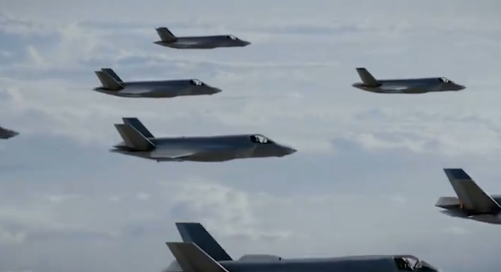The U.S. military recently unleashed a precise airstrike south of Baghdad, Iraq, zeroing in on combatants on the verge of deploying uncrewed aerial systems (UAS). This preemptive action, relayed by U.S. officials, was initiated to counter an imminent threat these systems posed to U.S. and Coalition Forces, stirring up tensions in the region____
“Based on recent attacks in Iraq and Syria, U.S. Central Command assessed that the OWAUAS posed a threat to U.S. and Coalition Forces.”
#BREAKING: US carried out a “defensive airstrike” in Babil province “targeting combatants attempting to launch one-way attack uncrewed aerial systems (OWAUAS)” – US defense official to Rudaw pic.twitter.com/ZMxIabOCzV
— Rudaw English (@RudawEnglish) July 31, 2024
Earlier that day, a series of blasts rocked an area reputed as a bastion for Iraq’s Popular Mobilization Forces, a coalition comprising Iranian-backed militias. The Popular Mobilization Authority reported casualties and injuries, notably impacting the 47th Brigade, though the nature of the explosions remained unclear___
“Forces affiliated with the 47th Brigade… were exposed to an explosion of unknown nature, which resulted in the martyrdom of a number of people and the injury of others.”
🚨#BREAKING: The U.S. military carried out an airstrike tonight targeting combatants in Iraq attempting to launch one-way attack uncrewed aerial systems (OWAUAS), a U.S. official told Al Arabiya. pic.twitter.com/meUdxIK7X4
— R A W S G L 🌎 B A L (@RawsGlobal) July 30, 2024
This strike is the first since February when a similar operation targeted a high-ranking militia leader. That February assault had temporarily halted attacks on U.S. installations, barring a couple of incidents in April. However, a new wave of aggression over the past week triggered this latest move, signaling a shift from retaliation to proactive defense.
In a deviation from past actions, which were reactive, this airstrike was distinctly defensive, targeting militants allegedly prepping for an imminent attack. Such anticipatory strikes aren’t new; the U.S. has frequently employed them in Yemen to thwart Houthi militants’ threats to commercial maritime routes in the Red Sea.
The fallout from this strike is yet to unfold, especially if insurgents persist in targeting U.S. assets. Nevertheless, a U.S. official underscored that this operation underscores America’s unwavering resolve to protect its personnel, emphasizing an inherent right to self-defense and a readiness to respond decisively.
Currently, around 2,500 U.S. troops remain stationed in Iraq, with an additional 900 in Syria, working alongside local forces to prevent ISIS from regaining ground. Meanwhile, dialogues between the U.S. and Iraq regarding the future deployment of these troops have been ongoing, reflecting the complex and shifting landscape of military strategy and international relations in the region.
Major Points
- U.S. airstrike targets combatants near Baghdad preparing to deploy uncrewed aerial systems (UAS).
- Blasts reported earlier in a hub for Iranian-backed militia groups, casualties occurred.
- First airstrike in Iraq since February’s targeting of a militia leader.
- Recent surge in attacks prompts shift from retaliatory to defensive actions.
- Ongoing discussions about the future of U.S. troop presence in Iraq and Syria.
Lap Fu Ip – Reprinted with permission of Whatfinger News

